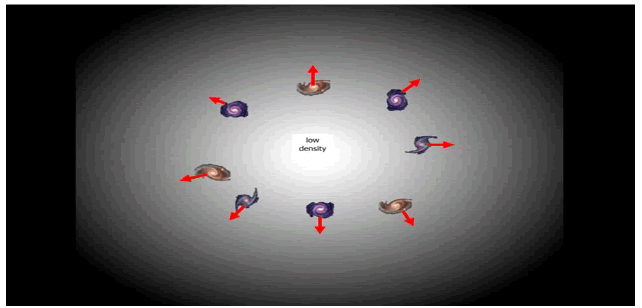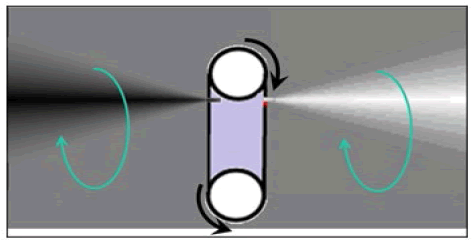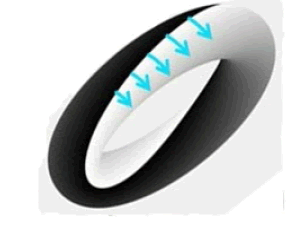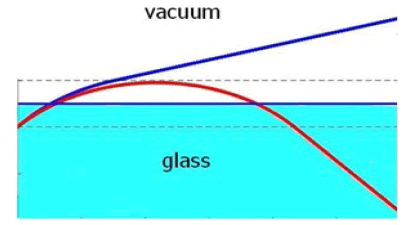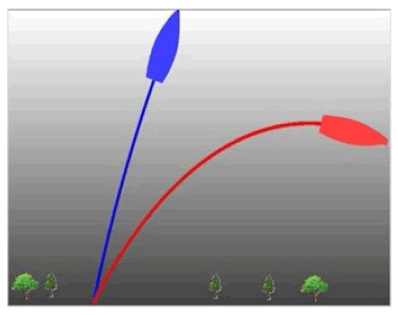Mini Review
, Volume: 13( 11)Comparative Analysis of the New Physical Paradigm
Received date: Nov-17-2024, Manuscript No. tsse-24-150262; Editor assigned: Nov-19-2024, Pre-QC No. tsse-24-150262(PQ); Reviewed: Nov-20-2024, QC No tsse-24-150262(Q); Revised: Nov-21-2024, Manuscript No. tsse-24-150262(R); Published: Nov-31-2024, DOI.10.37532/2320-6756.2024.13(11).366
Citation: Bakman Y. Comparative Analysis of the New Physical Paradigm. J Space Explor.2024;13(11).
Abstract
As the problem of dark energy has remained unresolved, many physicists have concluded that the underlying hypotheses are incorrect; thus, a deep revision of the physical paradigm has become urgent. In 2020, a description of a new physical paradigm was published. This paradigm is based on Nikola Tesla’s statement that there exists an invisible primary substance from which the world of mass is created. Among other things, this new paradigm reveals the mechanism of gravity, and subsequently, the problem of dark energy is resolved. Here, we compare the advantages and disadvantages of this new paradigm in comparison with the dominant paradigm.
Keywords
New paradigm; Nikola Tesla; Unification; Gravitation; Dark energy; Dark matter; Elementary particles
Introduction
The description of a new physical paradigm was published in 2020 [1,2]. Since then, a number of clarifying articles have been published as well as new ideas about the mechanism by which two gamma quanta transform into an electron–positron pair [3-7]. Later, a video was created with a visual explanation of the new paradigm [8].
Three years have passed since the introduction of this new physical paradigm, providing sufficient time for its advantages and disadvantages to be evaluated.
Here, we compare the new paradigm with the dominant paradigm according to the following characteristics:
• Is Occam's principle followed, with a reduction in the number of entities used? Is the number of postulates, principles, rules, and laws reduced in the description?
• Has there been a unification of phenomena that were previously considered different?
• Has the number of contradictions between adjacent branches of physics decreased?
• Have unknown mechanisms of phenomena been revealed?
• Is it possible to illustrate phenomena for which there was previously no graphical representation?
• Are there disadvantages to the new paradigm?
Is Occam's principle followed, with a reduction in the number of entities used?
Reducing the number of entities used was the main goal of the new paradigm. The new paradigm is based on only one building material, which Nicola Tesla called the primary substance.
A gravitational field is a primary substance with non-uniform density (FIG. 1).
Figure 1: This figure shows the planet Earth, surrounded by the primary substance. Although the primary substance is not visible, it is depicted in shades of gray in this figure; the darker color corresponds to a higher density of the primary substance.
According to the new paradigm, elementary particles, atoms, and molecules are stable vortices of the primary substance (FIG. 2).
Figure 2: Elementary particles and atoms are stable vortices of the primary substance: a) an electron vortex and b) a photon. The photon has a toroidal shape similar to that of an electron, but highly elongated.
The electron density wave participates in two rotations. One rotation around the toroid creates the spin of an electron. The second rotation in the cross-section of the toroid creates an electrical charge (discussed further below). Particle vortices are accelerated toward a higher density of the primary substance without the participation of any forces, corresponding to the phenomenon of gravity.
• An inverse gravitational field results when a region of space contains primary substance with a lower density, while the density is higher in the surrounding area (FIG. 3). The gravitational acceleration is directed outward, and if stars and galaxies are in the boundary zone, they will move away from the region of low density.
Figure 3: A zone with a lower density of primary substance results in an inverse gravitational field, and stars and galaxies are accelerated outward.
Physicists have attributed this phenomenon to “dark energy,” suggesting that some unknown energy pushes galaxies apart. In the new paradigm, there is no need for such dark energy, because the acceleration of material bodies toward a higher density of primary substance is a common phenomenon and does not require the intervention of any forces. Based on this new understanding, it is possible to use the term “negative gravity” instead of “dark energy.” Accordingly, it would be logically correct to use the term “positive gravity” instead of "dark matter.”
The discoverer of the electron, J. J. Thomson, put forth the hypothesis that an electric field consists of vortex tubes of ether. According to the new paradigm, the electron charge is a vortex tube, which is created by the electron itself (FIG. 4). On one side of the electron, a region of reduced medium density is formed (Negative Charge), and on the opposite side, a region of increased medium density is formed (Positive Charge). Thus, the electron is a dipole.
Figure 4: Illustration of the charge of an electron. The gray shading shows the change in the medium density caused by the behavior of the electron vortex. The electron is shown schematically as a cross-section.
The charge vortex tube circulates along with the electron density wave, thereby creating a magnetic moment. In FIG. 4, the circulation of the vortex tube is shown by two large arc arrows.
The dominant paradigm is replete with postulates, unsubstantiated principles, rules, and empirical laws as a substitute for the physical causes of phenomena. The new paradigm presents the cause-and-effect relationships of phenomena, which makes many postulates redundant.
Has there been a unification of phenomena that were previously considered different?
Yes, with the new paradigm, the extended concept of gravity includes dark energy, dark matter, and optical phenomena. Gravity also explains the electrical interaction of electrons. As shown in FIG. 5 and 6, electron B is located between electrons A and C. To the left of electron B, the medium density is reduced by electron A, and to the right, the density is increased by electron C. Due to the density difference, electron B experiences gravitational acceleration to the right.
Figure 5: In a closed circuit, an electric current results from the unidirectional movement of electrons along the conductor.
Figure 6: The medium density created by the charges of electrons A and C (electrons A and C themselves are not shown). The force on electron B has the same origin as the gravitational force.
Has the number of contradictions between adjacent branches of physics decreased?
In the standard model of elementary particles, contradictions with adjacent fields of physics are built in as a basis. This contradiction is formulated in the main postulate, which dictates that the laws of the macrocosm do not operate in the microcosm. Because of this postulate, the microscopic theory is free from any constraints. Unlike the dominant paradigm, the new paradigm proclaims the opposite postulate: the laws of the microcosm are the same as those of the macrocosm. This postulate requires that the new paradigm not have any contradictions between the theories of the microcosm and macrocosm.
Have unknown mechanisms of phenomena been revealed?
In general relativity, mass creates a curvature of space, but there is no answer to the question “What is the mechanism by which mass produces space curvature?”
In the new paradigm, mass is composed of vortices of primary substance. The latter lose part of their mass and can also completely disintegrate into an unorganized primary substance; therefore, a higher density of primary substance is formed around massive bodies, i.e., a gravitational field [2].
In such a field, any density wave turns toward a higher-density region of the medium FIG. 7 because the wave speed is lower in a denser primary substance.
Figure 7: A density wave of the primary substance is deflected in a gravitational field toward the region of higher density.
Because any fragment of a vortex particle is a density wave, the vortex as a whole accelerates toward a higher-density region of the medium (FIG. 8).
Figure 8: Any fragment of a vortex particle is a density wave. The arrows show the direction of the density wave velocity as part of the electron vortex.
The standard model of particle physics does not include gravity. The model also fails to explain why gravity is so much weaker than the electromagnetic force.
The new paradigm explains this difference as follows. In a Cavendish- type experiment, gravity is very weak because of the weak and passive mass loss by the balls. However, the electrons actively increase the density difference on both sides of their vortex (FIG. 6).
A problem arises in the wave theory of light when one considers the phenomenon of “total internal reflection,” because it is obvious that there is nothing to be reflected at the glass/vacuum boundary when the wave leaves the glass. When seeking to explain “total internal reflection,” scientists usually talk about the conditions under which “total internal reflection” occurs.
However, according to a Wikipedia article on Newton's explanation of “internal reflection,” Newton attributed this phenomenon to the “attraction” of a denser medium. According to the new paradigm, a smooth rotation of a photon occurs in an inhomogeneous medium red line in FIG. 9, and a deviation occurs toward the denser medium [2-6]. Photon rotation at the boundary between the two media occurs in the same manner in which a photon deviates in a gravitational field.
Figure 9: Two possible trajectories of a photon: refracted (blue) and “reflected” (red). The glass/vacuum boundary layer is shown by a dotted line.
To illustrate the similarity between a boundary layer and a gravitational field, let us consider the possible trajectories of a rocket in free flight in the Earth’s gravitational field (FIG. 10).
The blue rocket rises steeply, whereas the red rocket travels in a sloping trajectory, reaches a peak, and returns to the ground. The second rocket resembles "total internal reflection" in the case of beam refraction at the glass/vacuum interface (FIG. 9).
Thus, refraction is also based on gravity in an extended sense.
Now, it is clear that the word “reflection” is just as inappropriate in the phenomenon of “total internal reflection” as the statement that a thrown ball returns to the ground as a result of reflection. The dominant paradigm does not reveal the details regarding the creation of an electron–positron pair, but the new paradigm does (FIG.11) [7].
Figure 11: The stages of collision of two photons. At suitable photon energies, one photon transforms into an ordinary electron with a negative charge in front of it, and the other transforms into a positron with a positive charge in front. Here, the magnetic field is perpendicular to the illustration.
Is it possible to illustrate phenomena for which there was previously no graphical representation?
In quantum mechanics, it is impossible to depict processes. However, in the new paradigm, these processes can be illustrated, as was clearly demonstrated with the help of animation in a previous video. FIG.12 presents a snapshot from this video. This figure illustrates the physical meaning of Planck's formula E = ?ν for photon energy [4-8].
Figure 12: Illustration of the relationship between photon size and color, i.e., the rotational frequency of the photon.
Let us denote the energy of a red photon as E and its transverse diameter as D. Compared with a red photon, blue is compressed by a factor of k; thus, its diameter is D/k, and its energy is equal to kE. As a result, the product of the photon energy and its diameter E D does not change. Let u be the component of the photon vortex wave velocity in the direction perpendicular to its motion. Then, the period of one revolution of the wave is equal to
T = πD/u
and the photon frequency is v = 1/T = u/πD.
Moreover, the ratio of the photon energy to its frequency is
E/v = EπD/u = E Dπ/u
However, we previously found that E D is a constant for all photons. Additionally, for photons that are in the same medium, the vortex wave speed is the same. Hence, when the conditions of the external environment are constant, the ratio of a photon’s energy to its frequency is constant.
It remains to denote this constant h, and we then obtain the famous Planck equation E = ?ν.
Max Planck believed that his formula was not a collapse of classical physics. He persistently sought to prove to himself and to others that his theory could be derived from the classical theory. Now, this goal has been achieved. With the new paradigm, Planck's formula is derived from simple classical considerations.
Are there disadvantages to the new paradigm?
Mathematical models of the dominant paradigm have been derived by millions of physicists for hundreds of years. In contrast, the new paradigm was introduced only three years ago. Due to changes in representation, the problem of updating mathematical models arises. Based on this new understanding, it is necessary to correct the formula of universal gravitation. The traditional formula includes the mass of the body exerting the gravitational force, as indicated by a capital M. If the wood in a fireplace does not burn, the temperature will not increase, regardless of how much wood is placed in the fireplace. Likewise, mass by itself does not create gravity, regardless of how much mass is present. Gravity requires the transformation of mass into primary unorganized substance.
Therefore, instead of including the mass M of the gravitating body, the formula for gravitational acceleration should include the intensity of primary substance generation.

Astrophysics and cosmology are heavily based on the old formula. Thus, changing this formula requires substantial effort to adjust the consequences of this change. In addition, there are changes in other branches of physics.
Conclusions
The new has always been perceived with difficulty. To evaluate this new paradigm, it is necessary to overcome the stereotypes acquired as a result of education. For example, the interpretation of the Einstein photoelectric effect was not accepted by the physical community until 16 years after Einstein’s work was published.
Nevertheless, the new paradigm has shown advantages over the dominant paradigm with respect to many issues. Thus, further work lies in the development of mathematical models based on this new paradigm.
We hope that the next generation of physicists will support this initiative.
References
- Reilly T, Severs J, Leise C. Narrating Tesla in Against the Day. Pynchon’s Against the Day. Corrupt Pilgr Guide. 2011:139-266. [ Google Scholar]
- Y. Bakman. A New Physical Paradigm. 2020. [ Google Scholar]
- Y. Bakman. How a gravitational field accelerates particles and atoms. 2021.[ Google Scholar]
- Y. Bakman. Solution to Quantum Gravity and Other Enigmas of the Dominant Paradigm. 2021. [ Google Scholar]
- Y. Bakman. Is the Positron Really an Antiparticle? a Semiclassical Model of the Electron Charge. 2021. [ Google Scholar]
- Thomson JJ. Notes on recent researches in electricity and magnetism. Camb Univ Press. 1893. [ Google Scholar]
- Gagnon P. The standard model: a beautiful but flawed theory. Quantum D. 2014. [ Google Scholar]
- Einstein A. Über einen die Erzeugung und Verwandlung des Lichtes betreffenden heuristischen Gesichtspunkt. [ Google Scholar] [Crossref]


